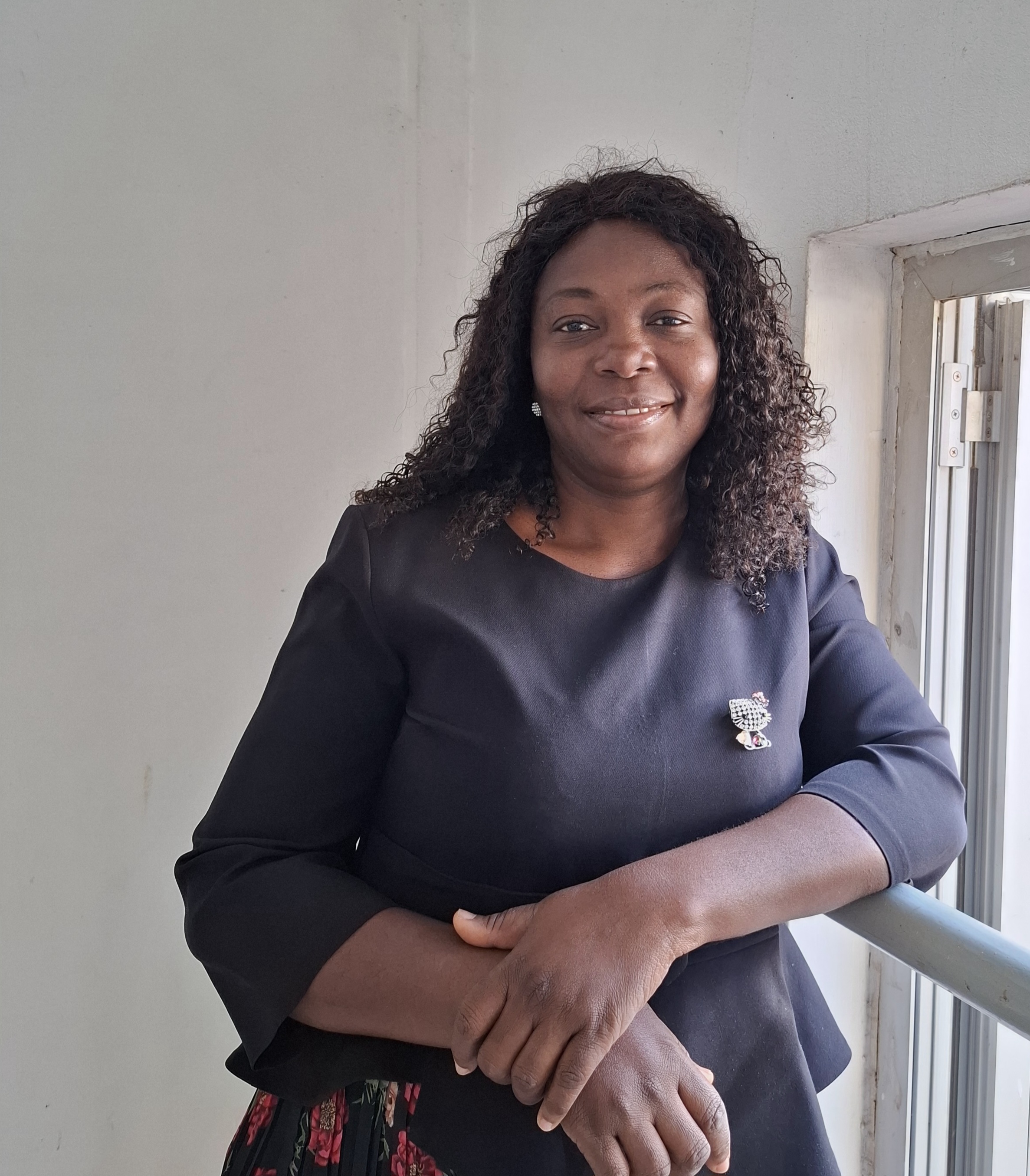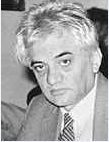Case Report
The Epigenetic Clock and Stem Cells: A New Lens on Aging
1H. P. Ghosh Research Center, New Town, Kolkata, West Bengal 700161, India.
2Sister Nivedita University, New Town, West Bengal 700156, India.
*Corresponding Author: Swarup K. Chakrabarti,H. P. Ghosh Research Center, New Town, Kolkata, West Bengal 700161, India.
Citation: Swarup K. Chakrabarti, Chattopadhyay D. (2025). The Epigenetic Clock and Stem Cells: A New Lens on Aging, International Journal of Medical Case Reports and Reviews, BioRes Scientia Publishers. 5(2):1-11. DOI: 10.59657/2837-8172.brs.25.078
Copyright: © 2025 Swarup K. Chakrabarti, this is an open-access article distributed under the terms of the Creative Commons Attribution License, which permits unrestricted use, distribution, and reproduction in any medium, provided the original author and source are credited.
Received: February 15, 2025 | Accepted: March 15, 2025 | Published: March 21, 2025
Abstract
As global life expectancy continues to rise, the prevalence of age-related conditions like cardiovascular diseases (CVDs), neurodegenerative diseases (NDs), and chronic inflammation is also on the rise. These diseases are closely tied to the aging process, which is more accurately assessed through biological age than chronological age alone. Hematopoietic stem cells (HSCs) from peripheral blood emerge as a promising non-invasive biomarker for evaluating biological age and associated health risks. Stem cells are highly sensitive to epigenetic changes, particularly DNA methylation patterns, which provide crucial insights into the aging process and their regenerative potential. Faster epigenetic aging, indicated by alterations in these methylation patterns, has been linked to diseases like Alzheimer's, cancer, and CVDs. Studies tend to suggest that interventions such as gene editing and small molecule therapies can rejuvenate stem cells by reversing or slowing epigenetic changes, thereby restoring their regenerative capabilities. This rejuvenation can significantly boost tissue repair and overall regeneration, presenting a promising strategy for addressing age-related diseases. By using stem cell biomarkers alongside epigenetic clocks, it is possible to detect age-related issues early and customize treatments based on individual needs. Monitoring the epigenetic state of stem cells allows healthcare professionals to predict aging patterns, identify potential risks, and develop personalized treatments to prevent or manage age-related conditions. This approach offers the potential for a future where stem cell biomarkers and epigenetic monitoring not only detect aging but also slow its progression, ultimately enhancing both lifespan and healthspan. These breakthroughs could transform personalized medicine and regenerative therapies.
Keywords: stem cells; peripheral blood stem cells; biological age; epigenetic clock; dna methylation; aging; regenerative medicine; personalized healthcare; aging biomarkers
Introduction
As global life expectancy continues to increase, the complications related to age-associated diseases and disabilities are becoming more apparent [1,2]. Forecasts suggest that by 2050, the proportion of people aged 60 and older will almost double, increasing from 12% in 2015 to 22% [3]. Although medical progress has played a major role in extending life expectancy, it has also led to a higher likelihood of developing age-related diseases later in life, such as cardiovascular diseases (CVDs), neurodegenerative diseases (NDs), and chronic inflammatory diseases, among others [4-6]. A particularly alarming concern is the finding that some people age more rapidly than others, even when they share the same chronological age [7,8]. The differences in how people age emphasize the importance of distinguishing between chronological and biological aging, stressing the critical necessity for reliable biomarkers that can forecast and manage aging prior to the onset of age-related diseases in a susceptible population. One of the most promising approaches to address accelerated biological aging involves stem cells, especially those derived from peripheral blood, which acts as a substantial source of hematopoietic stem cells (HSCs) [9 -11]. These cells possess regenerative capabilities, allowing them to repair damaged tissues and potentially reduce the effects of aging [12,13]. As peripheral blood can be collected through non-invasive techniques, HSC therapy presents a unique opportunity for broad interventions targeting aging within the population [14,15]. Not only could stem cell treatments help manage existing age-related diseases, but they also hold potential for delaying the onset of such age-related diseases, promoting healthier aging, and preventing the biological decline of organs and systems [16,17]. In addition, the exploration of the intersection of stem cell biology with the epigenetic clock is gradually emerging as a novel critical domain of aging research [18,19]. The epigenetic clock measures biological age by analyzing DNA methylation patterns, providing a quantifiable means of assessing age-related cellular changes influenced by factors such as lifestyle and environmental factors, among others [18-21]. These changes in DNA methylation offer a snapshot of an organism’s biological age, which often differs from chronological age, discerning the molecular processes that drive aging, and can suggest a potential intervention time point [22-24]. Moreover, recent astonishing advancements in stem cell biology have unearthed the significant role of stem cells derived from peripheral blood in shaping the epigenetic landscape of tissues [25-27]. Through their regenerative effects, stem cells can influence gene expression changes associated with aging, potentially reversing or mitigating these age-related aberrations [28,29]. This regenerative potential suggests the possibility of resetting certain epigenetic markers of aging, especially in stem cells, slowing, or even reversing biological aging [30]. Also, since HSCs have the potential to regenerate various tissues and organs, if HSCs are epigenetically altered to maintain a more youthful state, they could potentially delay the aging process or improve the regenerative capacity of other tissues. Additionally, combining stem cell therapies with epigenetic analysis provides a dual approach to understanding and intervening in aging by accurately analyzing the aging markers. Hence, aging-related epigenetic changes, as measured by the epigenetic clock, could thus potentially serve as biomarkers for assessing the effectiveness of stem cell-based interventions, paving the way for more personalized and precise aging interventions [31,32]. Together, as the global burden of age-related diseases such as Alzheimer's diseases (AD), CVDs, and osteoarthritis (OA) increases, integrating stem cell therapies bolstered by epigenetic monitoring presents a promising strategy for addressing the molecular mechanisms of aging and preventing accelerated aging. This combined approach could enhance the quality of life for aging populations, prevent debilitating conditions, and intervene at the molecular level to delay or even reverse the aging process. Ultimately, by linking stem cell therapy with epigenetic analysis, we may uncover transformative solutions that go beyond merely managing symptoms, offering the potential to reprogram cellular age and provide lasting benefits for an aging society. In essence, this article delves into the intricate epigenetic landscape of stem cells in relation to aging and how it is driven or impacted by the epigenetic clock. It also aims to stimulate growing interest and debate among scientists studying longevity and ways to enhance the healthspan of aging individuals.
The Role of Stem Cells in Aging: Beyond Regeneration
Stem cells possess the remarkable ability to self-replicate and differentiate into various types of cells, which is critical for the repair of tissues and organs [33-35]. Nonetheless, recent studies indicate that the aging process negatively impacts the functionality of stem cells, potentially contributing to diseases commonly associated with aging [36,37]. While stem cell therapies show potential in addressing numerous health issues, the effects of aging hinder both stem and progenitor cells. This impairment can precipitate a range of cellular dysfunctions, including apoptosis (programmed cell death), senescence (irreversible growth arrest), and a marked reduction in regenerative capacity. In other words, the decrease in the efficiency of adult stem cells as we age plays a significant role in various diseases linked to aging [38-40]. HSCs are vital for the ongoing production of blood cells, which play a key role in maintaining a healthy immune system and general well-being [41,42]. Each day, these stem cells produce billions of blood cells, which support the immune system and critical bodily functions. A decline in HSC function may impede immune responses and tissue repair, raising the risk of diseases and endangering overall health [43,44]. The impairment of stem cell functionality due to aging arises from multiple biological factors, including alterations in their microenvironment, DNA damage, shortening of telomeres, mitochondrial dysfunction, and epigenetic modifications [45-48]. However, this review primarily examines the epigenetic mechanisms that underlie the aging of stem cells, with a particular focus on the progressive decline in their numbers and function over time.
Circulating Stem Cells and Their Diagnostic Potential in Aging
Advancements in stem cell research have enhanced our ability to identify circulating stem cells in the bloodstream, which can provide crucial insights into the body’s overall health and its ability to regenerate [49, 50]. Investigating these stem cells can give us information about an individual's biological age and the effectiveness of their tissue regeneration. For instance, HSCs are found circulating in the blood, variations of which in their quantity or functionality may indicate risks for blood disorders such as anemia or leukemia, offering a non-invasive method to assess blood health and detect potential issues early on [51-53]. Importantly, circulating CD34+ cells—key surface markers of HSCs—are associated with cardiovascular health [54,55]. Their levels typically decline with the severity of the disease and as patients age. Additionally, lifestyle habits, including smoking and alcohol intake, are shown to decrease the amount of circulating CD34+ cells, highlighting the influence of lifestyle choices on stem cell wellness [56,57]. Besides stem cells, exosomes—small vesicles secreted by stem cells that carry genetic and protein data—are an effective way to evaluate stem cell health in real time [58, 59]. By examining exosomes obtained from blood or urine samples, it is possible to assess biological age and detect early indications of aging or illness, all without the need for invasive methods [60,61]. This technique offers a simple and accessible means to track stem cell function and overall wellness.
Although these promising developments are noteworthy, challenges still exist that must be addressed before stem cells can be consistently used as biomarkers in clinical practice. One major hurdle is the current technological constraints of exosome profiling, which requires further enhancement to guarantee its dependability and efficiency in standard healthcare settings [62, 63]. Moreover, the variation of stem cells across different tissues adds to the complexity. Stem cells derived from distinct tissues exhibit unique aging patterns, complicating the establishment of a universal biomarker applicable to all stem cell varieties [64, 65]. This suggests that methods specific to each tissue may be essential for precise assessments of biological age. For example, HSCs can be identified by their expression of the CD34 antigen, but it's important to note that not every CD34+ cell is a stem cell. Endothelial cells also express CD34, yet they lack the same capability for regeneration [66, 67]. The therapeutic benefits of isolating CD34+ cells likely stem from the array of cell types present in this varied group, which collaborate to enhance regenerative results.
To sum up, even with obstacles, stem cells have the potential to greatly enhance our grasp of aging. Studying how stem cells function, age, and what factors they secrete can yield important information about biological age and the likelihood of developing age-related conditions. Although there is still a need for advancements in non-intrusive evaluations of stem cell health, the progress made so far suggests that stem cells may eventually serve as significant indicators of aging, much like how blood pressure reflects cardiovascular wellness. In the long run, stem cell-based diagnostics could prove essential for early diagnosis, customized treatments, and preventive healthcare, which would bring substantial advantages for the aging population.
The Epigenetic Clock and Aging
The epigenetic clock is an innovative tool that assesses biological age through the patterns of DNA methylation, which evolve over time and indicate aging at a molecular level [7,8,18-20]. Unlike chronological age, which merely tracks the passage of time, biological age offers a more accurate reflection of an individual's health and aging status. These methylation alterations occur at specific locations known as 'CpG sites,' where a cytosine is immediately followed by a guanine [68]. The methylation at these locations is significantly influenced by environmental factors, lifestyle decisions, and natural biological processes, rendering it a versatile indicator of aging [69]. To expand on this, epigenetic clocks are mathematical tools that estimate age based on the methylation levels at certain CpG sites in the genome, which change in a predictable manner as we age [70,71]. They are commonly used to determine the age of different tissues and cells, including stem cells. A critical factor is the distinction between epigenetic age (EpiAge), measured by these clocks, and one's actual chronological age. This difference, when it occurs, is referred to as EpiAge acceleration [72,73]. Studies indicate that EpiAge acceleration is associated with a range of diseases, health challenges, lifestyle habits, mental well-being, and environmental factors. Epigenetic clocks provide significant insights into the fundamental biological mechanisms of aging. In 2013, Steve Horvath introduced the first major epigenetic clock, using DNA methylation patterns from diverse human tissues [74]. This foundational clock led to the creation of more precise epigenetic clocks. One notable example is Hannum’s Clock from 2013, which focuses on blood-based tissues [75]. While Horvath’s Clock is applicable to many tissues, Hannum’s Clock specializes in how blood cell methylation patterns relate to biological aging. Building on these innovations, the GrimAge clock enhances precision by combining DNA methylation data with plasma protein levels, improving predictions of lifespan and age-related disease risks. This integration of genetic and protein data allows a deeper understanding of aging markers, refining methods for assessing individuals' biological age and predicting their health paths [76, 77]. These advancements in epigenetic clocks emphasize their increasing role in aging research and their potential to transform our understanding of aging. Moreover, the epigenetic clock is remarkably precise in estimating biological age, with studies showing it can forecast age within a 3–4-year range across various tissues [78, 79]. This approach is far more reliable than depending solely on chronological age. Additionally, the epigenetic clock has significant predictive power for diseases associated with aging, such as AD, CVDs, and cancer [80-82]. For instance, an accelerated epigenetic age in the brain is frequently linked to AD, while having an epigenetically aged heart heightens the risk of CVDs [83,84]. These findings establish the epigenetic clock as an essential biomarker not just for aging but also for forecasting age-related diseases in various organs.
Linking Stem Cells and the Epigenetic Clock: A Unified Framework
Aging changes the epigenetic landscape of stem cells, which affects their ability to regenerate. This encompasses shifts in DNA methylation, alterations in histone post-translational modifications (PTMs), and variations in the expression of non-coding RNAs such as microRNAs (miRNAs) that influence gene function [85,86]. These epigenetic changes do not modify the DNA sequence but impact gene activity, resulting in reduced stem cell function. The cumulative effects of these modifications compromise stem cell self-renewal, trigger aberrant differentiation into suboptimal cell types, and markedly diminish their regenerative potential [87,88]. DNA methylation is crucial for regulating stem cell differentiation and maintaining pluripotency. In young stem cells, genes essential for self-renewal are typically hypomethylated [89,90]. However, with age, methylation patterns shift, leading to hypermethylation of self-renewal genes and hypomethylation of differentiation-related genes [91,92]. These perturbations destabilize the equilibrium between self-renewal and differentiation, driving stem cells toward premature differentiation and severely impairing their regenerative potential. This pattern is notably seen in aging HSCs, where altered DNA methylation impairs regeneration and weakens the immune response [93,94]. Histone PTMs, including acetylation and methylation, further influence stem cell aging [95-97]. In young stem cells, chromatin is more open, facilitating the expression of genes necessary for self-renewal [98,99]. With aging, however, there is a loss of histone acetylation and changes in histone methylation, leading to chromatin compaction and silencing of key regenerative genes [100,101]. For instance, in muscle stem cells, reduced histone acetylation marks at key loci hinder muscle regeneration, while in neural progenitor cells (NPCs), age-related histone modifications limit regenerative capacity [102,103]. Non-coding RNAs, especially miRNAs, also play a critical role in regulating stem cell function [104, 105]. These miRNAs influence gene expression by regulating the stability and translation of target mRNAs. In aged stem cells, dysregulation of miRNA expression impairs their regenerative abilities [106,107]. For example, changes in miR-29 in muscle stem cells contribute to compromised muscle regeneration, while in HSCs, altered miRNA regulation reduces their self-renewal capacity and regenerative potential [108-110]. Another factor contributing to stem cell aging is the loss of chromatin plasticity, which impairs the ability of stem cells to adapt to developmental and environmental cues [111,112]. This loss is often linked to impaired chromatin remodeling, where complexes like SWI/SNF (SWItch/Sucrose Non-Fermentable) and NURF (Nucleosome Remodeling Factor) become less efficient [113,114]. As a result, chromatin becomes more compact, which limits accessibility and hinders the activation of important regenerative pathways. In older stem cells, this reduction in chromatin flexibility weakens their response to differentiation signals and slows down effective tissue repair [115,116]. These epigenetic changes disrupt the delicate regulatory networks necessary for preserving stem cell function and tissue balance, ultimately leading to a decrease in regenerative ability seen with aging.
Telomere shortening is one of the most well-known hallmarks of aging, significantly affecting stem cell function [117,118]. In stem cells, telomeres are maintained by telomerase activity, but over time, telomeres shorten, leading to genomic instability and reduced regenerative capacity. Additionally, the DNA damage response (DDR) becomes less efficient with age, leading to an accumulation of DNA damage, which further contributes to stem cell dysfunction and epigenetic changes [119,120]. As telomeres shorten, stem cells lose their ability to self-renew, which compromises their regenerative potential. The accumulation of senescent cells (SCs) with age also plays a role in stem cell decline. SCs secrete pro-inflammatory cytokines, known as the senescence-associated secretory phenotype (SASP), which can alter the epigenetic landscape of neighboring stem cells and promote their dysfunction [121-123]. Chronic low-grade inflammation can disrupt stem cell regulation, further impairing their regenerative abilities [124, 125]. In aged tissues, cytokines can induce epigenetic changes, such as increased histone methylation, leading to the silencing of regeneration-related genes [126,127]. This inflammatory environment, in combination with epigenetic alterations, contributes to the decline of stem cell function.
As these epigenetic shifts accumulate, they not only affect stem cells themselves but also the tissues they repair. This manifests in aging traits like reduced muscle regeneration, immune dysfunction, and impaired brain repair capabilities. These age-related epigenetic changes in stem cells lead to a diminished capacity for tissue regeneration across various organs, highlighting the connection between stem cell function and overall tissue health. By targeting these epigenetic changes, scientists may be able to rejuvenate stem cell function and enhance tissue repair. Such interventions hold promise for addressing age-related degeneration and improving stem cell-based regenerative therapies. Understanding the relationship between stem cell epigenetics and tissue regeneration is essential for developing therapeutic strategies that can restore or enhance stem cell function in aging tissues.
Importantly, understanding the evolution of the epigenetic clock in aging stem cells may enhance our ability to monitor biological aging more effectively—moving beyond just chronological age to a tissue-specific perspective. This approach could facilitate the early identification of age-related diseases and support targeted interventions. Instead of depending solely on chronological age, which provides limited insight into a person’s biological state, we could analyze the epigenetic profiles of stem cells in various tissues for accurate predictions of aging and related diseases. This could lead to innovative strategies for aging prevention and personalized healthcare. Monitoring the changes in stem cells' epigenetic clocks could revolutionize our understanding, enabling the tracking of aging at the cellular level and pinpointing ways to maintain stem cell function and postpone age-related decline. Measuring how stem cells' epigenetic clocks change over time might yield a more accurate indication of aging than chronological age alone. The opportunity to comprehend and potentially decelerate the aging process through stem cell epigenetics marks an exciting new direction in both aging research and clinical practice.
Figure 1: The flow diagram illustrates how epigenetic changes contribute to stem cell aging, leading to tissue dysfunction and potential therapeutic interventions to restore regenerative capacity.
Stem Cell as Potential Aging Markers: The Road Ahead
The growing interest in using stem cells derived from peripheral blood (PBSCs) as potential non-invasive biomarkers of aging marks a significant advancement in biomedical research. Assessing biological age, which provides a more accurate representation of an individual's aging process than chronological age, through non-invasive techniques such as blood collection, could revolutionize personalized medicine and studies related to aging. This approach permits ongoing monitoring of a person's aging journey, deepening our insight into biological aging without the need for more invasive procedures. Using PBSCs as biomarkers provides an intriguing opportunity to assess the impact of anti-aging interventions, such as pharmaceuticals, lifestyle changes, and regenerative strategies like stem cell therapies and genetic modification. Monitoring the rejuvenation of stem cells through PBSC biomarkers can enable researchers and medical professionals to measure the success of these treatments in real time. This innovation could significantly enhance the precision and customization of regenerative medicine, permitting clinicians to witness improvements in stem cell functionality and tailor therapies as needed. As this domain progresses, integrating PBSC biomarker evaluation with advanced technologies like Artificial Intelligence (AI)-powered predictive models may allow for more accurate ongoing assessment of biological age and disease susceptibility [128,129].
The process of aging is intricate, making it improbable that a single biomarker could fully capture its essence. Instead, using a set of biomarkers, including telomere length, DNA methylation patterns, and functional assessments, is likely to provide a more comprehensive understanding of biological age. Ongoing studies aim to pinpoint the most reliable and predictive panels of biomarkers. When paired with epigenetic clocks, which monitor age-related changes in DNA methylation, PBSCs present a tailored approach to investigate and possibly influence the aging process. Unlike differentiated cells that lose their capacity to replicate, PBSCs retain the ability to self-renew and differentiate, creating a highly dynamic epigenetic landscape. This variability facilitates deeper explorations into the aging of stem cells, in contrast to terminally differentiated blood cells such as T cells or red blood cells (RBC). New studies seem to suggest that specified therapies can 'revitalize' PBSCs, assisting them in reclaiming their regenerative properties [130, 131]. Methods that use small molecules or genetic modifications to reverse epigenetic changes and restore youthful DNA methylation patterns may help slow down the aging process in PBSCs [132, 133]. This could significantly influence lifespan extension or reduce diseases associated with aging. The ability to modify the epigenetic clock opens up promising opportunities for treatments that not only slow aging but also rejuvenate aging stem cells. With ongoing studies and advancements in biomarker sets, we are approaching a future where we can possibly intervene in the aging process even before any noticeable symptoms appear, ultimately enhancing both lifespan and healthspan.
Conclusion
Taken together, stem cells derived from peripheral blood play a crucial role in our understanding and management of the aging process. By integrating biomarkers from stem cells with epigenetic clocks that analyze DNA methylation, scientists can effectively track biological aging and implement preventive strategies against diseases associated with aging. As stem cells undergo aging, alterations in their epigenetic profile diminish their regenerative capabilities, resulting in age-related challenges. Advances in stem cell therapies and artificial intelligence technologies present new opportunities for revitalizing these cells, decelerating the aging process, and enhancing both lifespan and health quality. Such developments have the potential to transform personalized medicine by enabling the early, non-invasive identification of age-related conditions and tailored treatment strategies.
Declarations
Conflict of interest
The authors have no conflicts of interest regarding the publication of this research.
Acknowledgment
This research is supported by Bandhan, Kolkata, India.
References
- Guo J, Huang X, Dou L, Yan M, Shen T, Tang W, Li J. (2022). Aging and aging-related diseases: from molecular mechanisms to interventions and treatments. Signal Transduct Target Ther, 7(1):391.
Publisher | Google Scholor - Mendoza-Núñez VM, Mendoza-Soto AB. (2024). Is Aging a Disease? A Critical Review Within the Framework of Ageism. Cureus, 16(2): e54834.
Publisher | Google Scholor - The Lancet Healthy Longevity. (2020). The Lancet Healthy Longevity: Health for All, For Longer.. Lancet Healthy Longev, 1(1): e1.
Publisher | Google Scholor - Hou Y, Dan X, Babbar M, Wei Y, Hasselbalch SG, Croteau DL, Bohr VA. (2019). Ageing as a risk factor for neurodegenerative disease. Nat Rev Neurol, 15(10):565-581.
Publisher | Google Scholor - Chib S, Devi S, Chalotra R, Mittal N, Singh TG, Kumar P, Singh R. (2024). Cross Talks between CNS and CVS Diseases: An Alliance to Annihilate. Curr Cardiol Rev, 20(3):63-76
Publisher | Google Scholor - Kesidou E, Theotokis P, Damianidou O, Boziki M, Konstantinidou N, Taloumtzis C, et al. CNS Ageing in Health and Neurodegenerative Disorders. J Clin Med, 12(6):2255.
Publisher | Google Scholor - Elliott ML, Caspi A, Houts RM, Ambler A, Broadbent JM, Hancox RJ, et al. (2021). Disparities in the pace of biological aging among midlife adults of the same chronological age have implications for future frailty risk and policy. Nat Aging, 1(3):295-308.
Publisher | Google Scholor - Zavala DV, Dzikowski N, Gopalan S, Harrington KD, Pasquini G, Mogle J, et al. (2024). Epigenetic Age Acceleration and Chronological Age: Associations with Cognitive Performance in Daily Life. J Gerontol a Biol Sci Med Sci, 79(1): glad242.
Publisher | Google Scholor - El Assaad N, Chebly A, Salame R, Achkar R, Bou Atme N, Akouch K, et al. (2024). Anti-aging based on stem cell therapy: A scoping review. World J Exp Med, 14(3):97233.
Publisher | Google Scholor - Abusalah MAH, Priyanka, Abd Rahman ENSE, Choudhary OP. (2024). Evolving trends in stem cell therapy: an emerging and promising approach against various diseases. Int J Surg, 110(11):6862-6868.
Publisher | Google Scholor - De Haan G, Lazare SS. (2018). Aging of hematopoietic stem cells. Blood, 131(5):479-487.
Publisher | Google Scholor - Hussen BM, Taheri M, Yashooa RK, Abdullah GH, Abdullah SR, Kheder RK, Mustafa SA. (2024). Revolutionizing medicine: recent developments and future prospects in stem-cell therapy. Int J Surg, 110(12):8002-8024.
Publisher | Google Scholor - Wang J, Deng G, Wang S, Li S, Song P, Lin K, et al. (2024). Enhancing regenerative medicine: the crucial role of stem cell therapy. Front Neurosci. 18:1269577.
Publisher | Google Scholor - Uchida N, Leonard A, Stroncek D, Panch SR, West K, Molloy E, et al. (2020). Safe and efficient peripheral blood stem cell collection in patients with sickle cell disease using plerixafor. Haematologica, 105(10): e497.
Publisher | Google Scholor - Karpova D, Rettig MP, DiPersio JF. (2019). Mobilized peripheral blood: an updated perspective. F1000Res, 8.
Publisher | Google Scholor - Jiang B, Duan L, Li J, Yan L. (2024). Editorial: Stem cells and extracellular vesicles in aging-related diseases. Front Cell Dev Biol, 12:1467532.
Publisher | Google Scholor - Garay RP. (2023). Recent clinical trials with stem cells to slow or reverse normal aging processes.. Front Aging, 4:1148926.
Publisher | Google Scholor - Hao Y, Han K, Wang T, Yu J, Ding H, Dao F. (2024). Exploring the potential of epigenetic clocks in aging research. Methods, 231:37-44.
Publisher | Google Scholor - Dutta S, Goodrich JM, Dolinoy DC, Ruden DM. (2023). Biological Aging Acceleration Due to Environmental Exposures: An Exciting New Direction in Toxicogenomics Research. Genes (Basel), 5(1):16.
Publisher | Google Scholor - Crimmins EM, Klopack ET, Kim JK. (2024). Generations of epigenetic clocks and their links to socioeconomic status in the Health and Retirement Study. Epigenomics, 16(14):1031-1042.
Publisher | Google Scholor - Warner B, Ratner E, Datta A, Lendasse A. (2024). A systematic review of phenotypic and epigenetic clocks used for aging and mortality quantification in humans. Aging (Albany NY), 16(17):12414-12427.
Publisher | Google Scholor - Field AE, Robertson NA, Wang T, Havas A, Ideker T, Adams PD. (2018). DNA Methylation Clocks in Aging: Categories, Causes, and Consequences. Mol Cell. 71(6):882-895.
Publisher | Google Scholor - Naue J. (2023). Getting the chronological age out of DNA: using insights of age-dependent DNA methylation for forensic DNA applications. Genes Genomics, 45(10):1239-1261.
Publisher | Google Scholor - Xiao FH, Wang HT, Kong QP. (2019). Dynamic DNA Methylation During Aging: A
Publisher | Google Scholor - Filidou E, Kandilogiannakis L, Tarapatzi G, Spathakis M, Su C, Rai A, et al. (2023). A Simplified and Effective Approach for the Isolation of Small Pluripotent Stem Cells Derived from Human Peripheral Blood. Biomedicines, 11(3):787.
Publisher | Google Scholor - Salas LA, Wiencke JK, Koestler DC, Zhang Z, Christensen BC, Kelsey KT. (2018). Tracing human stem cell lineage during development using DNA methylation. Genome Res, 28(9):1285-1295.
Publisher | Google Scholor - Smith N, Shirazi S, Cakouros D, Gronthos S. (2023). Impact of Environmental and Epigenetic Changes on Mesenchymal Stem Cells during Aging. Int J Mol Sci, 24(7):6499.
Publisher | Google Scholor - Boyette LB, Tuan RS. Adult Stem Cells and Diseases of Aging. J Clin Med,3(1):88-134
Publisher | Google Scholor - Ji S, Xiong M, Chen H, Liu Y, Zhou L, Hong Y, et al. (2023). Cellular rejuvenation: molecular mechanisms and potential therapeutic interventions for diseases. Signal Transduct Target Ther,, 8(1):116.
Publisher | Google Scholor - Rando TA, Chang HY. (2012). Aging, rejuvenation, and epigenetic reprogramming: resetting the aging clock. Cell, 148(1-2):46-57.
Publisher | Google Scholor - Duan R, Fu Q, Sun Y, Li Q. (2022). Epigenetic clock: A promising biomarker and practical tool in aging. Ageing Res Rev, 81:101743.
Publisher | Google Scholor - Wang K, Liu H, Hu Q, Wang L, Liu J, Zheng Z, et al. (2022). Epigenetic regulation of aging: implications for interventions of aging and diseases. Signal Transduct Target Ther, 7(1):374.
Publisher | Google Scholor - Jin Y, Li S, Yu Q, Chen T, Liu D. (2023). Application of stem cells in regeneration medicine.. MedComm, 4(4): e291.
Publisher | Google Scholor - Durmaz A, Visconte V. (2024). Capturing the unpredictability of stem cells. Elife, 13: e95513.
Publisher | Google Scholor - Bolkent S. (2024). Cellular and molecular mechanisms of asymmetric stem cell division in tissue homeostasis. Genes Cells, 29(12):1099-1110.
Publisher | Google Scholor - Ahmed AS, Sheng MH, Wasnik S, Baylink DJ, Lau KW. (2017). Effect of aging on stem cells. World J Exp Med, 7(1):1-10.
Publisher | Google Scholor - Signer RA, Morrison SJ. (2013). Mechanisms that regulate stem cell aging and life span. Cell Stem, 12(2):152-65.
Publisher | Google Scholor - Oh J, Lee YD, Wagers AJ. (2024). Stem cell aging: mechanisms, regulators and therapeutic opportunities. Nat Med, 20(8):870-80.
Publisher | Google Scholor - Spehar K, Pan A, Beerman I. (2020). Restoring aged stem cell functionality: Current progress and future directions. Stem Cells, 38(9):1060-1077.
Publisher | Google Scholor - Tenchov R, Sasso JM, Wang X, Zhou QA. (2024). Aging Hallmarks and Progression and Age-Related Diseases: A Landscape View of Research Advancement. ACS Chem Neurosci, 3;15(1):1-30.
Publisher | Google Scholor - Kwon M, Kim BS, Yoon S, Oh SO, Lee D. (2024). Hematopoietic Stem Cells and Their Niche in Bone Marrow. Int J Mol Sci, 25(13):6837.
Publisher | Google Scholor - Shevyrev D, Tereshchenko V, Berezina TN, Rybtsov S. (2023). Hematopoietic Stem Cells and the Immune System in Development and Aging. Int J Mol Sci, 24(6):5862.
Publisher | Google Scholor - Kelly LS, Darden DB, Fenner BP, Efron PA, Mohr AM. (2021). The Hematopoietic Stem/Progenitor Cell Response to Hemorrhage, Injury, and Sepsis: A Review of Pathophysiology. Shock, 56(1):30-41.
Publisher | Google Scholor - Urao N, Liu J, Takahashi K, Ganesh G. (2022). Hematopoietic Stem Cells in Wound Healing Response. Adv Wound Care (New Rochelle), 11(11):598-621.
Publisher | Google Scholor - Li Y, Tian X, Luo J, Bao T, Wang S, Wu X. (2024). Molecular mechanisms of aging and anti-aging strategies. Cell Commun Signal, 22(1):285.
Publisher | Google Scholor - Rossiello F, Jurk D, Passos JF, d'Adda di Fagagna F. (2022). Telomere dysfunction in ageing and age-related diseases. Nat Cell Biol, 24(2):135-147.
Publisher | Google Scholor - López-Otín C, Blasco MA, Partridge L, Serrano M, Kroemer G. (2023). Hallmarks of aging: An expanding universe. Cell, 186(2):243-278.
Publisher | Google Scholor - Adams PD, Jasper H, Rudolph KL. (2015). Aging-Induced Stem Cell Mutations as Drivers for Disease and Cancer. Cell Stem Cell, 16(6):601-12.
Publisher | Google Scholor - Ratajczak MZ. (2018). Circulating Stem Cells in Physiology and Pathology - Recent Studies Published in Stem Cell Reviews and Reports. Stem Cell Rev Rep, 14(5):627-628.
Publisher | Google Scholor - Fadini GP, Mehta A, Dhindsa DS, Bonora BM, Sreejit G, Nagareddy P, Quyyumi AA. (2020). Circulating stem cells and cardiovascular outcomes: from basic science to the clinic. Eur Heart J, 41(44):4271-4282.
Publisher | Google Scholor - Lee JY, Hong SH. (2020). Hematopoietic Stem Cells and Their Roles in Tissue Regeneration. Int J Stem Cells, 13(1):1-12.
Publisher | Google Scholor - Kwon M, Kim BS, Yoon S, Oh SO, Lee D. (2024). Hematopoietic Stem Cells and Their Niche in Bone Marrow. Int J Mol Sci, 25(13):6837.
Publisher | Google Scholor - Yamashita M, Dellorusso PV, Olson OC, Passegué E. (2020). Dysregulated haematopoietic stem cell behaviour in myeloid leukaemogenesis. Nat Rev Cancer, 20(7):365-382.
Publisher | Google Scholor - Cohen KS, Cheng S, Larson MG, Cupples LA, McCabe EL, Wang YA, et al. (2013). Circulating CD34(+) progenitor cell frequency is associated with clinical and genetic factors. Blood, 121(8):e50-e56.
Publisher | Google Scholor - Mackie AR, Losordo DW. (2011). CD34-positive stem cells: in the treatment of heart and vascular disease in human beings. Tex Heart Inst J, 38(5):474-85.
Publisher | Google Scholor - Kaastrup K, Grønbæk K. (2021). The Impact of Sedentary Lifestyle, High-fat Diet, Tobacco Smoke, and Alcohol Intake on the Hematopoietic Stem Cell Niches. Hemasphere, 5(8):e615.
Publisher | Google Scholor - Chan AH, Huang NF. (2020). Effects of nicotine on the translation of stem cell therapy. Regen Med, 15(5):1679-1688.
Publisher | Google Scholor - Choudhery MS, Arif T, Mahmood R, Harris DT. (2024). Stem Cell-Based Acellular Therapy: Insight into Biogenesis, Bioengineering and Therapeutic Applications of Exosomes. Biomolecules, 14(7):792.
Publisher | Google Scholor - Burke J, Kolhe R, Hunter M, Isales C, Hamrick M, Fulzele S. (2016). Stem Cell-Derived Exosomes: A Potential Alternative Therapeutic Agent in Orthopaedics. Stem Cells Int, 5802529.
Publisher | Google Scholor - DeCastro J, Littig J, Chou PP, Mack-Onyeike J, Srinivasan A, Conboy MJ, et al. (2021). The Microfluidic Toolbox for Analyzing Exosome Biomarkers of Aging. Molecules, 26(3):535.
Publisher | Google Scholor - Li M, Zeringer E, Barta T, Schageman J, Cheng A, Vlassov AV. (2014). Analysis of the RNA content of the exosomes derived from blood serum and urine and its potential as biomarkers. Philos Trans R Soc Lond B Biol Sci, 369(1652):20130502.
Publisher | Google Scholor - Palakurthi SS, Shah B, Kapre S, Charbe N, Immanuel S, Pasham S, et al. (2024). A comprehensive review of challenges and advances in exosome-based drug delivery systems. Nanoscale Adv. 6(23):5803-5826.
Publisher | Google Scholor - Sani F, Shafiei F, Dehghani F, Mohammadi Y, Khorraminejad-Shirazi M, Anvari-Yazdi AF, et al. (2024). Unveiling exosomes: Cutting-edge isolation techniques and their therapeutic potential. J Cell Mol Med, 28(20):e70139.
Publisher | Google Scholor - Pizzute T, Lynch K, Pei M. (2015). Impact of tissue-specific stem cells on lineage-specific differentiation: a focus on the musculoskeletal system. Stem Cell Rev Rep, 11(1):119-32.
Publisher | Google Scholor - Yi N, Zeng Q, Zheng C, Li S, Lv B, Wang C, et al. )2024). Functional variation among mesenchymal stem cells derived from different tissue sources. PeerJ, 12:e17616.
Publisher | Google Scholor - Sidney LE, Branch MJ, Dunphy SE, Dua HS, Hopkinson A. (2014). Concise review: evidence for CD34 as a common marker for diverse progenitors. Stem Cells, 32(6):1380-1389.
Publisher | Google Scholor - Ross MD. (2018). Endothelial Regenerative Capacity and Aging: Influence of Diet, Exercise and Obesity. Curr Cardiol Rev, 14(4):233-244.
Publisher | Google Scholor - Li L, Chen R, Zhang H, Li J, Huang H, Weng J, et al. (2024). The epigenetic modification of DNA methylation in neurological diseases. Front Immunol, 15:1401962.
Publisher | Google Scholor - Dhingra R, Nwanaji-Enwerem JC, Samet M, Ward-Caviness CK. (2018). DNA Methylation Age-Environmental Influences, Health Impacts, and Its Role in Environmental Epidemiology. Curr Environ Health Rep, 5(3):317-327.
Publisher | Google Scholor - Bell CG, Lowe R, Adams PD, Baccarelli AA, Beck S, Bell JT, et al. (2019). DNA methylation aging clocks: challenges and recommendations. Genome Biol, 20(1):249.
Publisher | Google Scholor - Unnikrishnan A, Freeman WM, Jackson J, Wren JD, Porter H, Richardson A. (2019). The role of DNA methylation in epigenetics of aging. Pharmacol Ther, 195:172-185.
Publisher | Google Scholor - Cheishvili D, Do Carmo S, Caraci F, Grasso M, Cuello AC, Szyf M. (2025). EpiAge: a next-generation sequencing-based ELOVL2 epigenetic clock for biological age assessment in saliva and blood across health and disease. Aging (Albany NY), 17(1):131-160.
Publisher | Google Scholor - Mendelson MM. (2018). Epigenetic Age Acceleration: A Biological Doomsday Clock for Cardiovascular Disease? Circ Genom Precis Med, 11(3):e002089.
Publisher | Google Scholor - Matsuyama M, Søraas A, Yu S, Kim K, Stavrou EX, Caimi PF, et al. (2020). Analysis of epigenetic aging in vivo and in vitro: Factors controlling the speed and direction. Exp Biol Med (Maywood), 245(17):1543-1551.
Publisher | Google Scholor - Epigenetic Clocks Across Blood and Brain Tissue in Older Women and Men. (2021). Front Neurosci, 14:555307.
Publisher | Google Scholor - Tao X, Zhu Z, Wang L, Li C, Sun L, Wang W, Gong W. (2024). Biomarkers of Aging and Relevant Evaluation Techniques: A Comprehensive Review. Aging Dis. 15(3):977-1005.
Publisher | Google Scholor - Rutledge J, Oh H, Wyss-Coray T. (2022). Measuring biological age using omics data. Nat Rev Genet, 23(12):715-727.
Publisher | Google Scholor - Gensous N, Sala C, Pirazzini C, Ravaioli F, Milazzo M, Kwiatkowska KM, et al. (2022). A Targeted Epigenetic Clock for the Prediction of Biological Age. Cells, 11(24):4044.
Publisher | Google Scholor - Harvanek ZM, Boks MP, Vinkers CH, Higgins-Chen AT. (2023). The Cutting Edge of Epigenetic Clocks: In Search of Mechanisms Linking Aging and Mental Health. Biol Psychiatry, 94(9):694-705.
Publisher | Google Scholor - Roetker NS, Pankow JS, Bressler J, Morrison AC, Boerwinkle E. (2018). Prospective Study of Epigenetic Age Acceleration and Incidence of Cardiovascular Disease Outcomes in the ARIC Study (Atherosclerosis Risk in Communities). Circ Genom Precis Med, 11(3):e001937.
Publisher | Google Scholor - Yu M, Hazelton WD, Luebeck GE, Grady WM. (2020). Epigenetic Aging: More Than Just a Clock When It Comes to Cancer. Cancer Res, 80(3):367-374.
Publisher | Google Scholor - Levine ME, Lu AT, Quach A, Chen BH, Assimes TL, Bandinelli S, et al. (2018). An epigenetic biomarker of aging for lifespan and healthspan. Aging (Albany NY),10(4):573-591.
Publisher | Google Scholor - Zhou A, Wu Z, Zaw Phyo AZ, Torres D, Vishwanath S, Ryan J. (2022). Epigenetic aging as a biomarker of dementia and related outcomes: a systematic review. Epigenomics, 14(18):1125-1138.
Publisher | Google Scholor - Sun X, Chen W, Razavi AC, Shi M, Pan Y, Li C, et al. (2024). Associations of Epigenetic Age Acceleration with CVD Risks Across the Lifespan: The Bogalusa Heart Study. JACC Basic Transl, 9(5):577-590.
Publisher | Google Scholor - Larue AEM, Atlasi Y. (2024). The epigenetic landscape in intestinal stem cells and its deregulation in colorectal cancer. Stem Cells, 42(6):509-525.
Publisher | Google Scholor - Przybilla J, Rohlf T, Loeffler M, Galle J. (2014). Understanding epigenetic changes in aging stem cells--a computational model approach. Aging Cell, 13(2):320-308.
Publisher | Google Scholor - Beerman I, Rossi DJ. (2015). Epigenetic Control of Stem Cell Potential during Homeostasis, Aging, and Disease. Cell Stem Cell, 16(6):613-625.
Publisher | Google Scholor - Srinageshwar B, Maiti P, Dunbar GL, Rossignol J. (2016). Role of Epigenetics in Stem Cell Proliferation and Differentiation: Implications for Treating Neurodegenerative Diseases. Int J Mol Sci, 17(2):199.
Publisher | Google Scholor - Sun D, Luo M, Jeong M, Rodriguez B, Xia Z, Hannah R, et al. (2014). Epigenomic profiling of young and aged HSCs reveals concerted changes during aging that reinforce self-renewal. Cell Stem Cell, 14(5):673-88.
Publisher | Google Scholor - Llewellyn J, Baratam R, Culig L, Beerman I. (2024). Cellular stress and epigenetic regulation in adult stem cells. Life Sci Alliance, 7(12): e202302083.
Publisher | Google Scholor - Yazar V, Dawson VL, Dawson TM, Kang SU. (2023). DNA Methylation Signature of Aging: Potential Impact on the Pathogenesis of Parkinson's Disease. J Parkinsons Dis, 13(2):145-164.
Publisher | Google Scholor - Johnson AA, Akman K, Calimport SR, Wuttke D, Stolzing A, de Magalhães JP. (2012). The role of DNA methylation in aging, rejuvenation, and age-related disease. Rejuvenation Res, 15(5):483-494.
Publisher | Google Scholor - Fujino T, Asada S, Goyama S, Kitamura T. (2022). Mechanisms involved in hematopoietic stem cell aging. Cell Mol Life Sci, 79(9):473.
Publisher | Google Scholor - Liu B, Qu J, Zhang W, Izpisua Belmonte JC, Liu GH. (2022). A stem cell aging framework, from mechanisms to interventions. Cell Rep, 41(3):111451.
Publisher | Google Scholor - Yi SJ, Kim K. New Insights into the Role of Histone Changes in Aging. (2020). Int J Mol Sci, 21(21):8241.
Publisher | Google Scholor - Liu R, Wu J, Guo H, Yao W, Li S, Lu Y, et al. (2023). post-translational modifications of histones: Mechanisms, biological functions, and therapeutic targets. MedComm, 4(3): e292.
Publisher | Google Scholor - Sun Y, Zhang H, Qiu T, Liao L, Su X. (2022). Epigenetic regulation of mesenchymal stem cell aging through histone modifications. Genes Dis, 10(6):2443-2456.
Publisher | Google Scholor - Klein DC, Hainer SJ. (2020). Chromatin regulation and dynamics in stem cells. Curr Top Dev Biol, 138:1-71.
Publisher | Google Scholor - Li X, Zhu G, Zhao B. (2024). Chromatin remodeling in tissue stem cell fate determination. Cell Regen, 13(1):18.
Publisher | Google Scholor - McCauley BS, Dang W. (2014). Histone methylation and aging: lessons learned from model systems. Biochim Biophys Acta, 1839(12):1454-62.
Publisher | Google Scholor - Dubey SK, Dubey R, Kleinman ME. (2024). Unraveling Histone Loss in Aging and Senescence. Cells, 13(4):320.
Publisher | Google Scholor - Cicciarello D, Schaeffer L, Scionti I. (2022). Epigenetic Control of Muscle Stem Cells: Focus on Histone Lysine Demethylases. Front Cell Dev Biol, 10:917771.
Publisher | Google Scholor - Navarro Negredo P, Yeo RW, Brunet A. (2020). Aging and Rejuvenation of Neural Stem Cells and Their Niches. Cell Stem Cell, 27(2):202-223.
Publisher | Google Scholor - Tang Y, Lei W, Chen Y, Wang X, Hamrick MW, Zhou M. (2018). Noncoding RNAs and Stem Cell Function and Therapy. Stem Cells Int, 7306034.
Publisher | Google Scholor - Mathieu J, Ruohola-Baker H. (2013). Regulation of stem cell populations by microRNAs. Adv Exp Med Biol, 786:329-51.
Publisher | Google Scholor - Ortiz GGR, Mohammadi Y, Nazari A, Ataeinaeini M, Kazemi P, Yasamineh S, et al. (2023). A state-of-the-art review on the MicroRNAs roles in hematopoietic stem cell aging and longevity. Cell Commun Signal, 21(1):85.
Publisher | Google Scholor - Okada M, Kim HW, Matsu-ura K, Wang YG, Xu M, Ashraf M. (2016). Abrogation of Age-Induced MicroRNA-195 Rejuvenates the Senescent Mesenchymal Stem Cells by Reactivating Telomerase. Stem Cells, 34(1):148-59.
Publisher | Google Scholor - Ding Z, Ma G, Zhou B, Cheng S, Tang W, Han Y, et al. (2024). Targeting miR-29 mitigates skeletal senescence and bolsters therapeutic potential of mesenchymal stromal cells. Cell Rep Med, 5(8):101665.
Publisher | Google Scholor - Rusu-Nastase EG, Lupan AM, Marinescu CI, Neculachi CA, Preda MB, Burlacu A. (2022). MiR-29a Increase in Aging May Function as a Compensatory Mechanism Against Cardiac Fibrosis Through SERPINH1 Downregulation. Front Cardiovasc Med, 8:810241.
Publisher | Google Scholor - Koopmans PJ, Ismaeel A, Goljanek-Whysall K, Murach KA. (2023). The roles of miRNAs in adult skeletal muscle satellite cells. Free Radic Biol Med, 209(Pt 2):228-238.
Publisher | Google Scholor - Shi C, Wang L, Sen P. (2020). The eroding chromatin landscape of aging stem cells. Transl Med Aging, 4:121-131.
Publisher | Google Scholor - Tomita-Naito S, Sulekh S, Yoo SK. (2024). Insidious chromatin changes with a propensity to exhaust intestinal stem cells during aging. iScience, 27(9):110793.
Publisher | Google Scholor - Nguyen VT, Tessema M, Weissman BE. (2023). The SWI/SNF Complex: A Frequently Mutated Chromatin Remodeling Complex in Cancer. Cancer Treat Res, 190:211-244.
Publisher | Google Scholor - Church MC, Workman JL. (2024). The SWI/SNF chromatin remodeling complex: a critical regulator of metabolism. Biochem Soc Trans, 52(3):1327-1337.
Publisher | Google Scholor - Yokomizo T, Oshima M, Iwama A. (2024). Epigenetics of hematopoietic stem cell aging. Curr Opin Hematol, 31(4):207-216.
Publisher | Google Scholor - Li M, Guo H, Carey M, Huang C. (2024). Transcriptional and epigenetic dysregulation impairs generation of proliferative neural stem and progenitor cells during brain aging. Nat Aging, 4(1):62-79.
Publisher | Google Scholor - Harley J, Santosa MM, Ng CY, Grinchuk OV, Hor JH, Liang Y, et al. (2024). Telomere shortening induces aging-associated phenotypes in hiPSC-derived neurons and astrocytes. Biogerontology, 25(2):341-360.
Publisher | Google Scholor - Mason CE, Sierra MA, Feng HJ, Bailey SM. (2024). Telomeres and aging: on and off the planet! Biogerontology, 25(2):313-327.
Publisher | Google Scholor - Schumacher B, Pothof J, Vijg J, Hoeijmakers JHJ. (2021). The central role of DNA damage in the ageing process. Nature, 592(7856):695-703.
Publisher | Google Scholor - Soto-Palma C, Niedernhofer LJ, Faulk CD, Dong X. (2022). Epigenetics, DNA damage, and aging. J Clin Invest, 132(16): e158446.
Publisher | Google Scholor - Huang W, Hickson LJ, Eirin A, Kirkland JL, Lerman LO. (2022). Cellular senescence: the good, the bad and the unknown. Nat Rev Nephrol, 18(10):611-627.
Publisher | Google Scholor - Paramos-de-Carvalho D, Jacinto A, Saúde L. (2021). The right time for senescence. Elife, e72449.
Publisher | Google Scholor - Crouch J, Shvedova M, Thanapaul RJRS, Botchkarev V, Roh D. (2022). Epigenetic Regulation of Cellular Senescence. Cells, 11(4):672.
Publisher | Google Scholor - Caballero-Sánchez N, Alonso-Alonso S, Nagy L. (2024). Regenerative inflammation: When immune cells help to re-build tissues. FEBS J, 291(8):1597-1614.
Publisher | Google Scholor - Ho NP, Takizawa H. (2022). Inflammation Regulates Haematopoietic Stem Cells and Their Niche. Int J Mol Sci, 23(3):1125.
Publisher | Google Scholor - Yasmin R, Siraj S, Hassan A, Khan AR, Abbasi R, Ahmad N. (2015). Epigenetic regulation of inflammatory cytokines and associated genes in human malignancies. Mediators Inflamm. 201703.
Publisher | Google Scholor - Tarnowski M, Kopytko P, Piotrowska K. (2021). Epigenetic Regulation of Inflammatory Responses in the Context of Physical Activity. Genes (Basel), 12(9):1313.
Publisher | Google Scholor - Prelaj A, Miskovic V, Zanitti M, Trovo F, Genova C, Viscardi G, et al. (2024). Artificial intelligence for predictive biomarker discovery in immuno-oncology: a systematic review. Ann Oncol, 35(1):29-65.
Publisher | Google Scholor - Moqri M, Herzog C, Poganik JR; Biomarkers of Aging Consortium; Justice J, Belsky DW et al. (2023). Biomarkers of aging for the identification and evaluation of longevity interventions. Cell. 186(18):3758-3775.
Publisher | Google Scholor - Hussen BM, Taheri M, Yashooa RK, Abdullah GH, Abdullah SR, Kheder RK, Mustafa SA. (2024). Revolutionizing medicine: recent developments and future prospects in stem-cell therapy. Int J Surg, 110(12):8002-8024.
Publisher | Google Scholor - Ebrahimi A, Ahmadi H, Pourfraidon Ghasrodashti Z, Tanide N, Shahriarirad R, Erfani A, et al. (2021). Therapeutic effects of stem cells in different body systems, a novel method that is yet to gain trust: A comprehensive review. Bosn J Basic Med Sci, 21(6):672-701.
Publisher | Google Scholor - Wang K, Liu H, Hu Q, Wang L, Liu J, Zheng Z, et al. (2022). Epigenetic regulation of aging: implications for interventions of aging and diseases. Signal Transduct Target Ther, 7(1):374.
Publisher | Google Scholor - Yang JH, Petty CA, Dixon-McDougall T, Lopez MV, Tyshkovskiy A, Maybury-Lewis S, et al. (2023). Chemically induced reprogramming to reverse cellular aging. Aging (Albany NY), 15(13):5966-5989.
Publisher | Google Scholor















